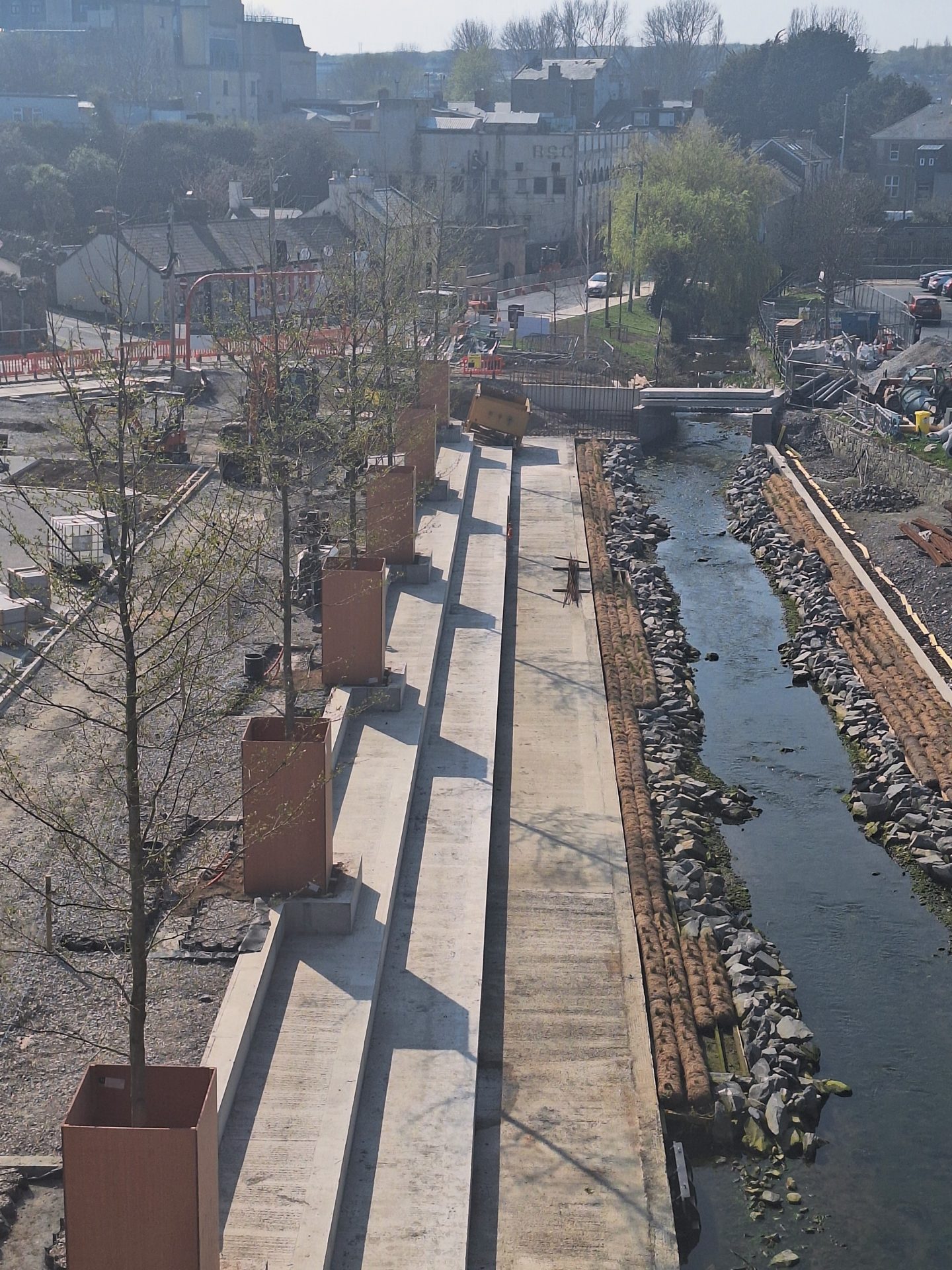As part of the €15million Balbriggan Quay Street and Harbour redevelopment project, Fingal County Council is continuing its exciting tree planting initiative.
An alignment of six Alnus x Spaethii trees have been planted in the plaza.
This follows the planting of 14 trees – Acer and Alnux x Spaethii – around the Mill Street, Town Centre Car Park and along the adjoining River Bracken.
The Alnux x Spaethii is a variety of Alder recognised for its resilience in an urban environment and is well-suited to paved areas, and coastal locations.
The Acer is a variety of Sycamore, recognised for its resilience in urban environments, being especially well-suited for coastal settings due to its impressive tolerance for salt spray and air pollution.
As a robust hybrid Alder, Alnus x Spaethii is notable for its attractive male and female catkins, which bloom in late winter.
Alnus x Spaethii trees have been planted at substantial sizes – 40-45 cm girth in the plaza near the river, and 30-35 cm girth in the car park – to ensure immediate visual impact.
At full maturity, these trees can reach heights of over 15 metres, with a canopy spread exceeding 10 metres, making them a striking addition to both the car park and the river alignment.
To enhance accessibility and ensure easy passage beneath them, their canopies will be maintained at a height of over two meters.
Specialised tree pits, designed to support the healthy growth and longevity of the trees, while protecting underground utilities, have been used.
These engineered pits provide necessary space for root expansion and improve soil conditions, ensuring trees thrive in an urban environment.
By integrating large trees into urban spaces, the aim is to enhance the visual appeal of the area, while also promoting ecological health and sustainability.
The approach not only contributes to the aesthetic quality of the landscape, but also fosters biodiversity, improves air quality, and enhances overall community wellbeing.
Tress are selected according to the following criteria –
- Urban resilience and adaptability
- Ensuring the continuity of existing ecological and biodiverse habitats
- Aesthetic value and seasonal diversity
- Tolerance to changing climate conditions and salt
- Future proofing – sustainable selections for long term viability
- Sizes available
